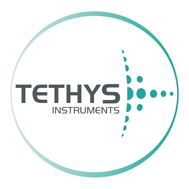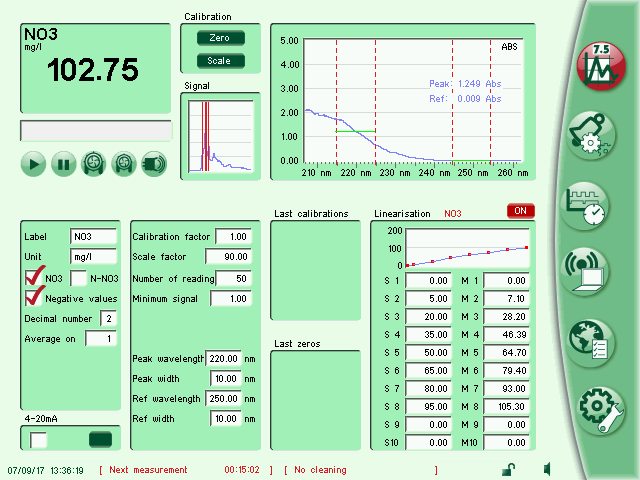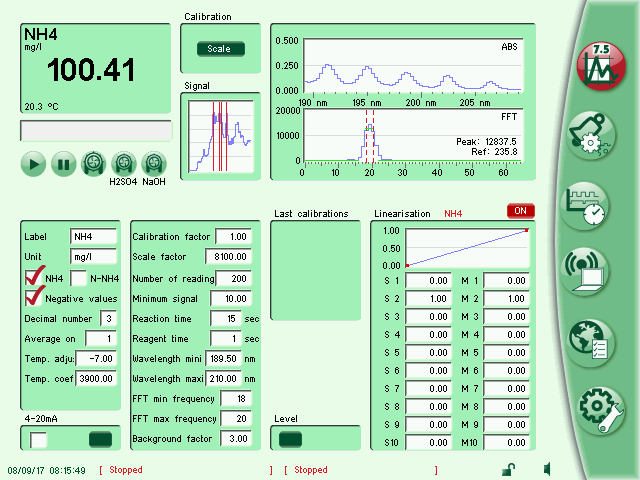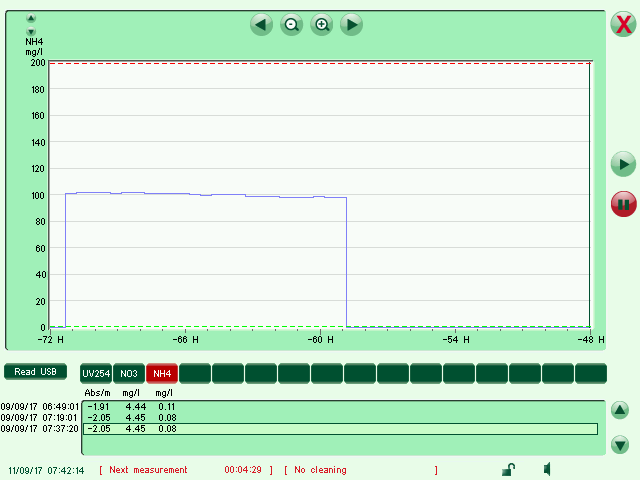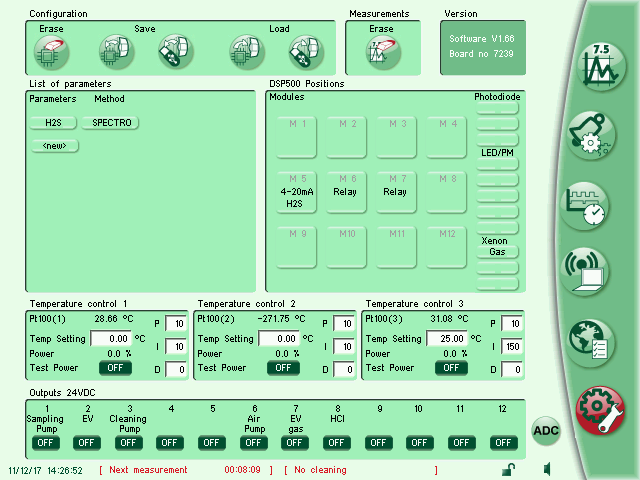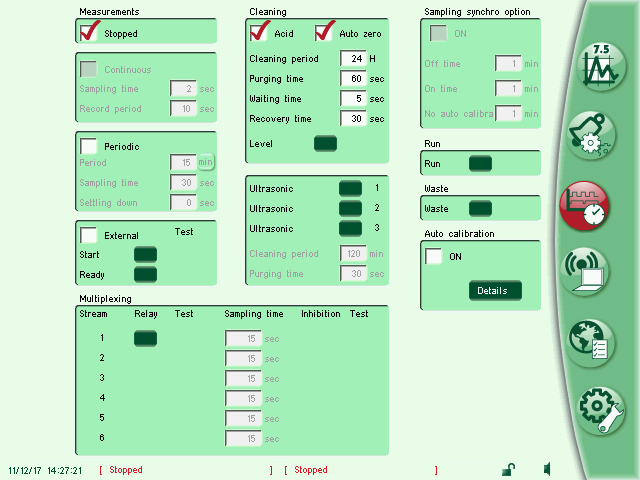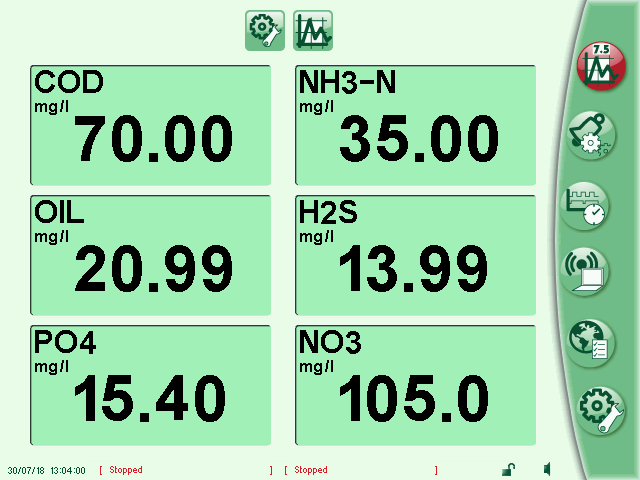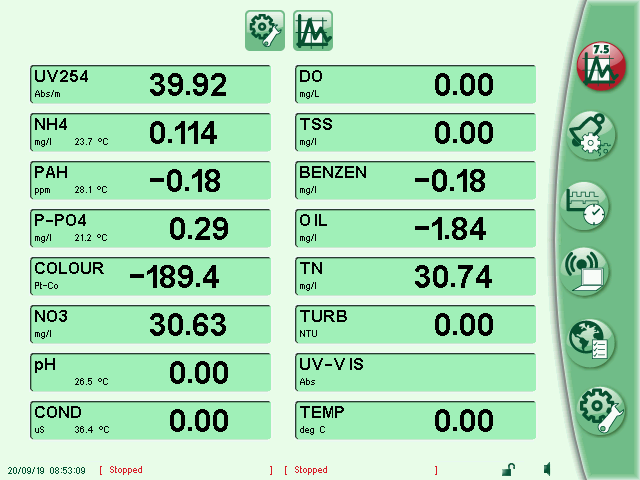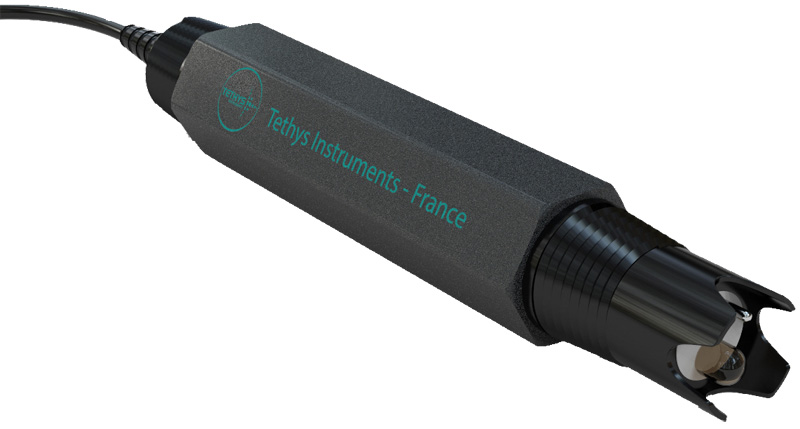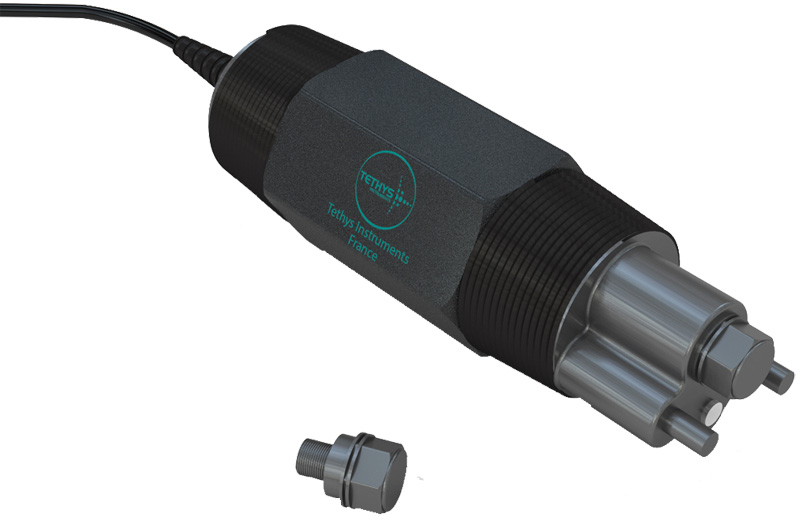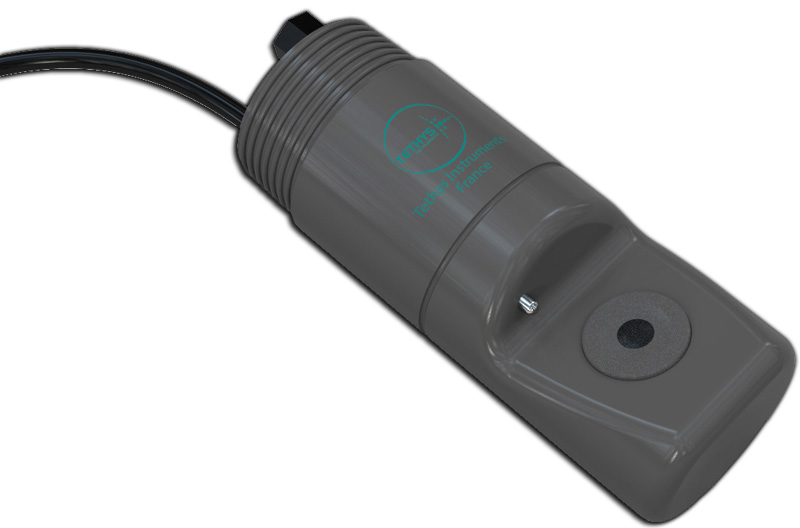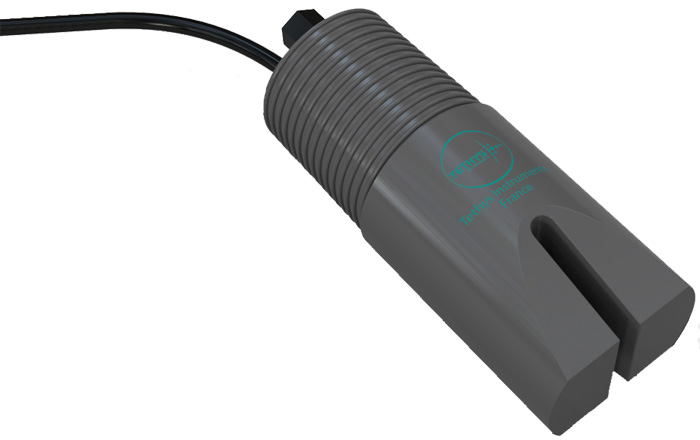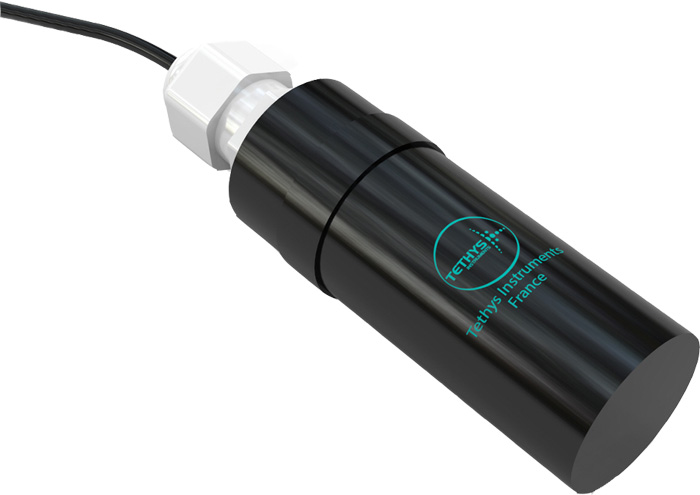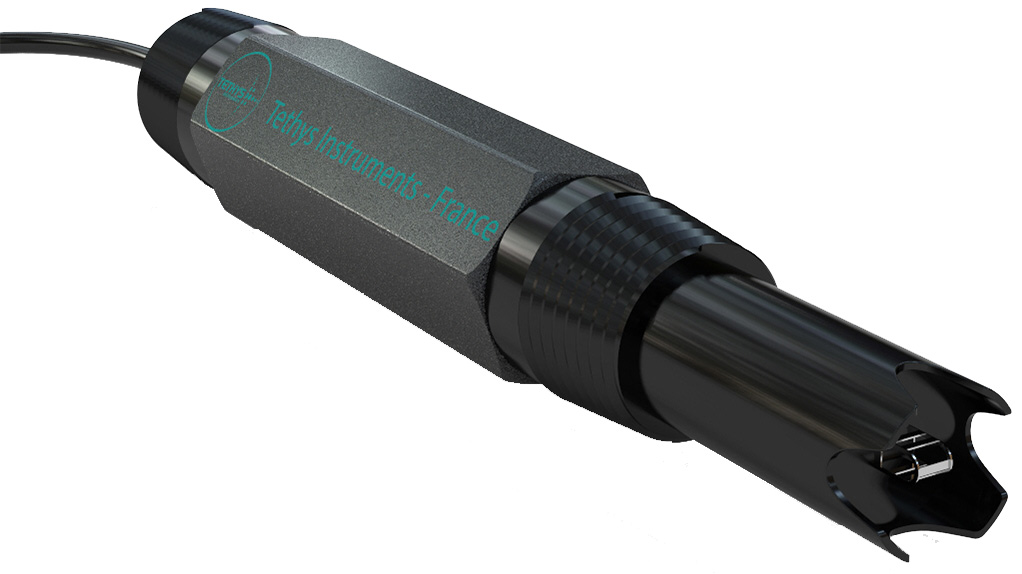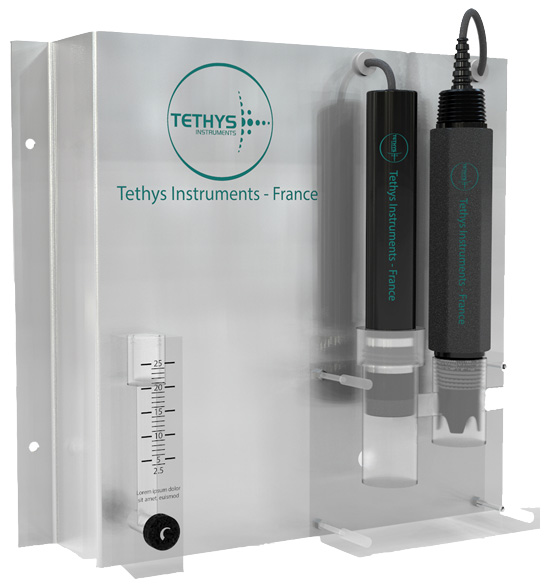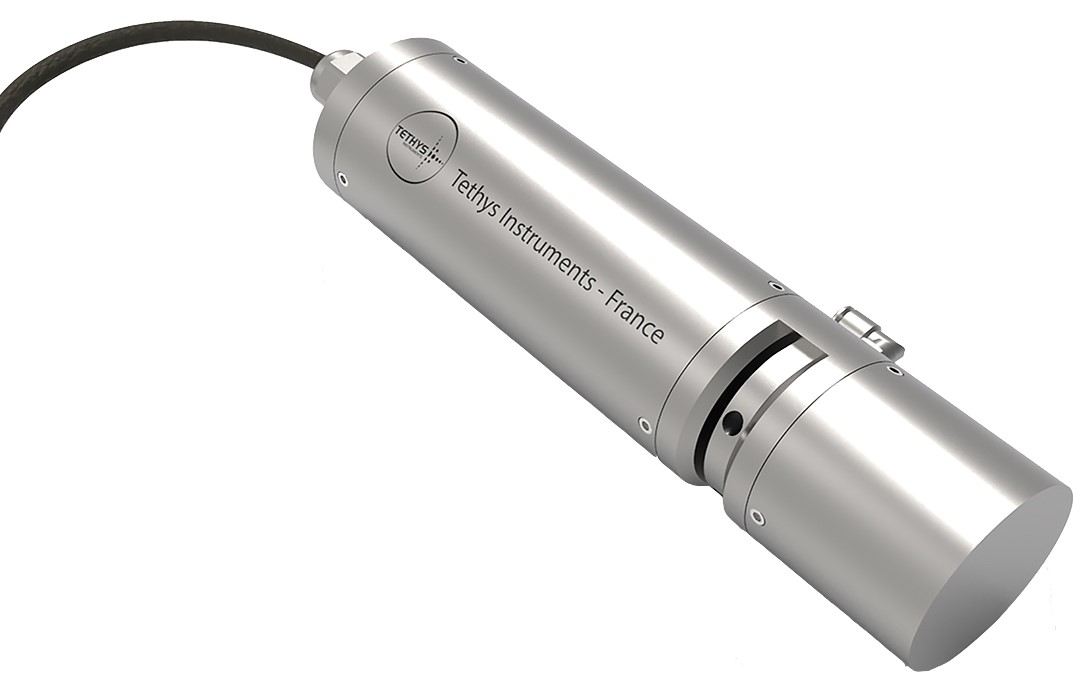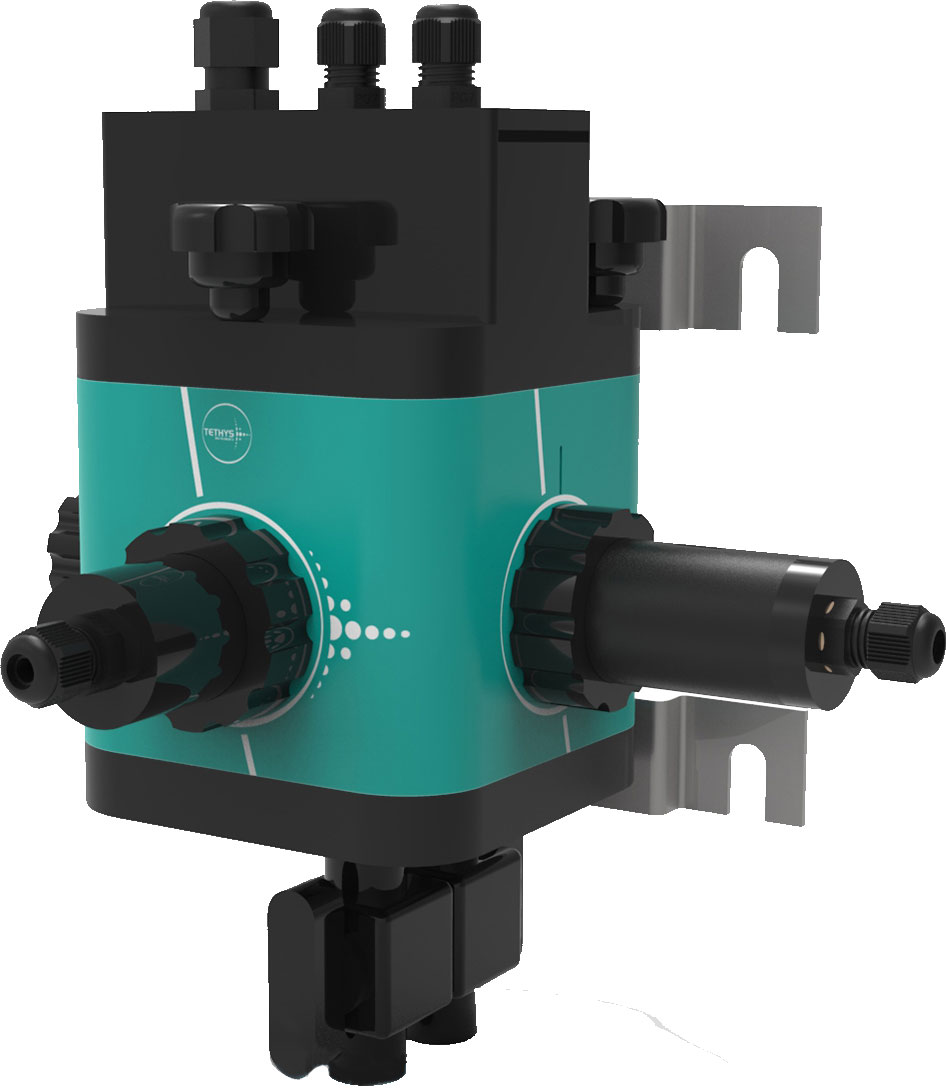UV600 TPTN Online Water Analyser
Tethys Instruments UV600TPTN provides a simple and fast way to measure total phosphorus and total nitrogen for surface water or industrial / municipal waste water treatment plants with accuracy, stability and low operating cost. A digestion set up enables to oxidize both organic and inorganic phosphorus and nitrogen compounds into orthophosphates and nitrates, respectively, using potassium persulfate under alkaline conditions at 95 ͦC and UV light irradiation. Total amount of orthophosphates is then quantified by a colorimetric module while total amount of nitrates is determined by direct UV absorbance measurement. Phosphorus compounds such as trimethyl phosphate or polyphosphate (sodium hexametaphosphate) can be recovered up to 98% yield. External probes can be added for phsysicochemical parameters like pH, ORP, dissolved oxygen, conductivity and total suspended solids. Thanks to its automatic cleaning system, the maintenance is roughly limited to the periodic refill of the inexpensive cleaning solution and regents.
UV600 TPTN Measurement Principle
Wet-Chemical Oxidation Followed by Colorimetry.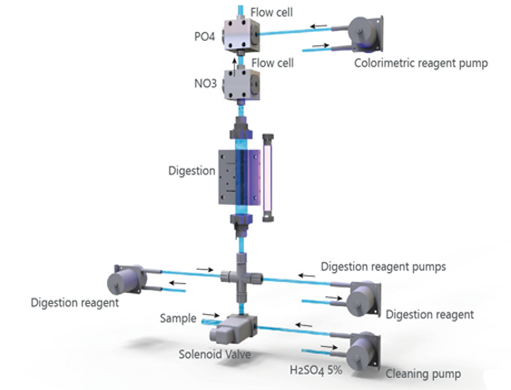
- The water sample is mixed with an alkaline decomposition solution made of potassium peroxodisulfate. The solution is heated at 95 °C and irradiated with UV light. Phosphorous compounds are converted to orthophosphates while nitrogen-based compounds are transformed to nitrates. Two different methods are used to quantify orthophosphates and nitrates.
- The water sample is mixed with an alkaline decomposition solution made of potassium peroxodisulfate. The solution is heated at 95 °C and irradiated with UV light. Phosphorous compounds are converted to orthophosphates while nitrogen-based compounds are transformed to nitrates. Two different methods are used to quantify orthophosphates and nitrates.
- In the molybdenum blue method (EN ISO 6878 and Standard Methods 4500-P), the orthophosphate ions react with ammonium molybdate and potassium antimonyl tartate under acidic conditions to afford phosphomolybdic acid. This acid is then reduced by ascorbic acid to give a colored molybdenum blue, which intensity is measured by a LED at 630 nm.
- In the vanadomolybdophosphoric method (Standard Method 4500-P), orthophosphates react with ammonium molybdate under acidic conditions to afford molybdophosphoric acid. The molybdophosphoric acid reacts with ammonium monovanadate to give vanadomolybdophosphoric acid. This acid is yellow. The absorption of the solution is measured by a blue LED. In this method, the reagent has a longer lifetime than the reagents of the molybdenum blue method.
- In both methods, the absorption is proportional to the phosphate concentration, based on the Beer-Lambert law. The colorimetric module has been specially developed to reach a very small volume flow cell that reduces the quantity of reagent to preserve the environment and to reduce the operating cost. The multi-wavelength LED source assumes a colour and turbidity compensation with an unlimited life time.
- The overall measurement typically takes 14 minutes. It can be extended up to 20 minutes for more complex samples (longer digestion time needed). The oxidation yield was tested on different phosphorus compounds such as trimethyl phosphate and sodium hexametaphosphate (polyphosphate).
- A transparent screen with a reflective part enables an instant visual control of the set-up while maximising the UV irradiation of the digestion cell and protecting the user from UV light exposure.
- The UV lamp used in the digestion process can last from 6 months to 2 years, depending on the frequency of the measure.
- All wet and electronic parts are separated within the analyser.
Patented Flow Cell
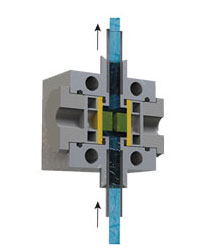
User-Friendly Interface
The Large colour touch screen (10.4”) and intuitive interface available in 9 different languages (Chinese, English, French, German, Hungarian, Italian, Portuguese, Spanish, Turkish) makes very easy to test or configure the analyser.
Many test functions allow to test and troubleshoot each element of the analysers (light signal, pump, solenoid valves, etc….) to set up quickly a maintenance diagnostic.
An acid resistant protection film on the screen assumes an efficient long-term protection.
Communication

The RS232 port supports the MODBUS protocol to transmit each measuring channel value to a SCADA system.
Additional parameters are available like status code, error code, calibration values and pumps run time.
Basic 4-20 mA output modules can be plugged on the main board for each measuring channel, in the limit of 12 modules. A USB port enables to download on any USB key the last 5000 recorded measurements as well as a diagnostic file containing the configuration and useful information for remote troubleshooting.
The recorded measurements file be imported to Excel for graphs or other treatments. The software of the analyser can be upgraded by connecting a USB key.
.
Multiplexing system
Up to 6 different streams can be selected.
The measuring channels can be either duplicated (each one having its own 4-20 mA output or MODBUS register) or measured sequentially to fit with the maximum of 16 measuring channels (a MODBUS register tells which stream is currently being measured).
Autocleaning
Autozeroing
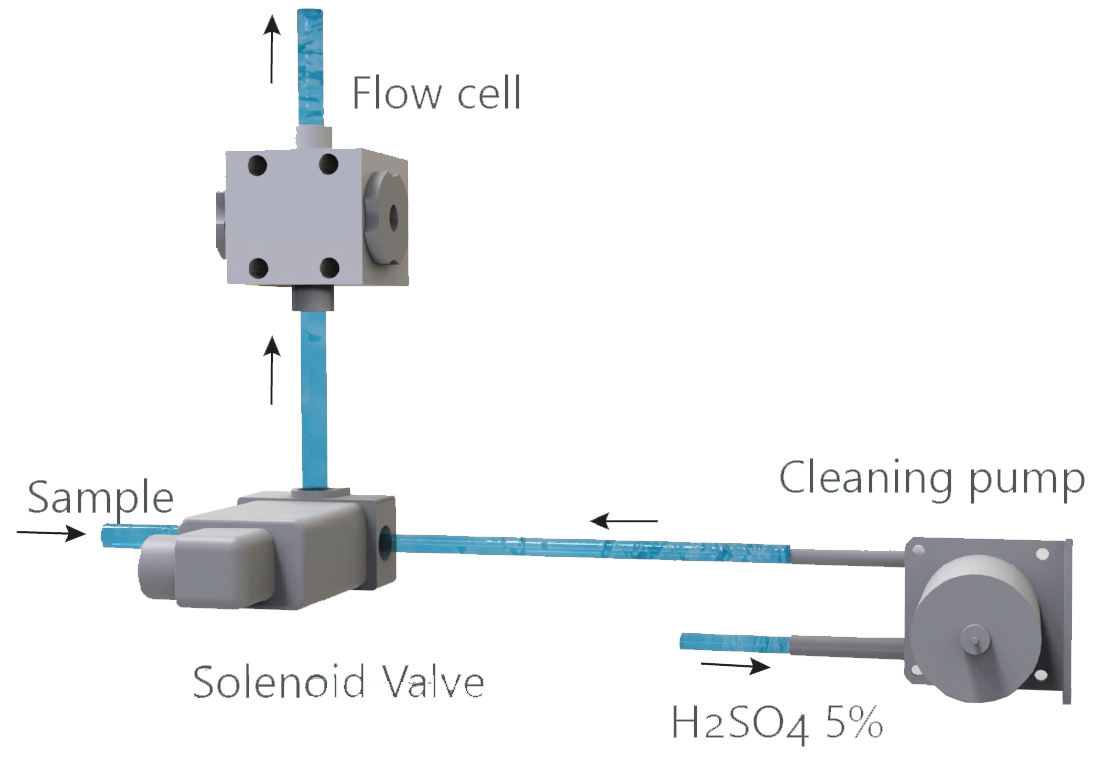
Sampling System
The UV600TPTN can adapt to many different kinds of sampling depending on the application: surface water, drinking. water, process water or wastewater.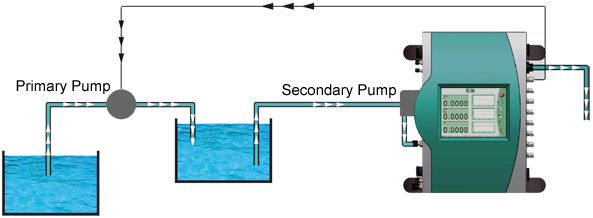
UV600 TPTN Dimensional Drawing
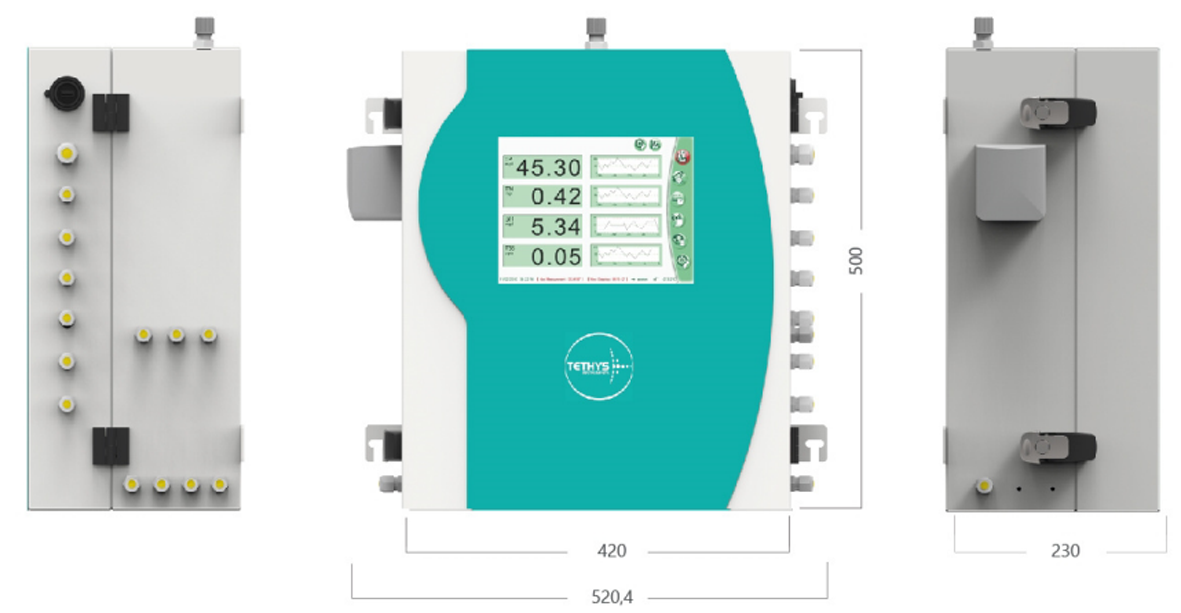
Tethys Instruments UV600TPTN provides a simple and fast way to measure total phosphorus and total nitrogen for surface water or industrial / municipal waste water treatment plants with accuracy, stability and low operating cost. A digestion set up enables to oxidize both organic and inorganic phosphorus and nitrogen compounds into orthophosphates and nitrates, respectively, using potassium persulfate under alkaline conditions at 95 ͦC and UV light irradiation. Total amount of orthophosphates is then quantified by a colorimetric module while total amount of nitrates is determined by direct UV absorbance measurement. Phosphorus compounds such as trimethyl phosphate or polyphosphate (sodium hexametaphosphate) can be recovered up to 98% yield. External probes can be added for phsysicochemical parameters like pH, ORP, dissolved oxygen, conductivity and total suspended solids. Thanks to its automatic cleaning system, the maintenance is roughly limited to the periodic refill of the inexpensive cleaning solution and regents.
UV600 TPTN Parameters Specifications
| Parameter | Standard range
Other ranges on request |
Typical Repeatability For low values (<10% FS) |
Accuracy
On standard solution |
|---|---|---|---|
| Total Phosphorus | 0 – 2 mg/L 0 – 20 mg/L |
± 0.02 mg/l
± 0.2 mg/l |
± 2% |
| Total Nitrogen | 0 – 50 mg/L |
± 0.1 mg/l |
± 2% |
| pH | 0-14 |
± 0.01 pH |
± 2% |
| ORP | ± 2000 mV | ± 1 mV | ± 2% |
| Dissolved oxygen | 0 – 25 mg/L O2 | ± 0.1 mg/L O2 | ± 2% |
| Conductivity | 0 – 2000 µS | ± 1µS | ± 2% |
| Total Suspended Solids | 0 – 1500 mg/L TSS
0 – 30000 mg/L TSS |
± 1 % of reading or±2 %mg/L TSS
± 1 % of reading or±2 %mg/L TSS |
± 2%
± 2% |
| Temperature | 0 – 80 °∁ | ± 0.1 °∁ | ± 2% |
UV600 TPTN General Specifications
| Sample flow | 0,6 L/min (only during sampling time)
|
| Sample pressure | 0 – 1 bar with sampling peristaltic pump |
| Sample temperature | 0 °C to 80 °C |
| Wet parts material | Polypropylene, Polyethylene, PMMA, PEEK, FPM (Viton), Quartz |
| UV generation | UV Lamp |
| Digestion temperature | 95 ͦC |
| Measuring time | 14 to 30 minutes for complex samples |
| Measurement interval | 15 min to 720 min (if measuring time compatible) Physicochemical parameters may be continuous |
| Memory | 5000 lines of measurements (up to 16 channels) with date and time |
| Consumption | Cleaning solution (sulfuric acid 5%): 220 mL/day Digestion reagents per measurement: 11.3 mL up to XX mL for TN Colorimetric reagent per measurement: 1.2 mL |
| Maintenance interval | Recommended: 6 months to 1 year (except for refilling) |
| Power supply | 90 – 264 V / Maxi 500 VA / 50 – 60 Hz |
| Screen | 10.4” Colour TFT LCD 640x480 pixels with LED backlight |
| Communication | RS232 with MODBUS protocol RS485 for external probes USB USB |
| Certifications | CE, EN 61010-1, EN 61326 |
| Enclosure | Stainless steel with epoxy coating, IP65, wall mounting brackets |
| Ambient Temperature | -20 ͦC to 60 ͦC |
| Dimensions | 715x450x242 mm (HxLxD) |
| Weight | 25 kg |
UV600TPTN Parts references
| Basic Unit | |
| UV600TPTN Common Characteristics: | Color graphic display 640x480 pixels with touch screen
Built-in data logger, memory 5000 measurements
For each parameter,
12 sockets for input and output modules
(not included, refer to options), 7 available glands for inputs / outputs, RS232 included (sub-D 9 ways female connector) With 2 meters cable for PC, RS485 included for communication with RS485 probes, USB port integrated for USB key connection, Automatic cleaning system with 2-litres tank, Power supply 90-260 VAC 47-63 Hz with Power cord 2 meters, Enclosure IP65 / Nema3 715x450x242 mm (HxLxD) / 20 to 30 kg Mounting lugs for wall, Sampling peristaltic pump with a flow of about 600 mL/min. |
| Measurement module by oxidative digestion and colorimetry | |
| Complete unit TP-H: Total phosphorus high range: | 0 – 20 mg/L
|
| TP-H: Total phosphorus low range: | 0 – 20 mg/L
|
| Measurement module by oxidative digestion and UV absorption | |
| TN: Total nitrogen Range | 0 – 50 mg/L
|
| Measurements by electrode (external) | |
| PH500 | pH/ORP module pH Range: 0 -14 ATC input for platinum RTD 100 Ohm or 1000 Ohm ORP Range: -2000 mV to +2000mV |
| ELPH | pH on-line electrode Range: 0-14 5 meters of cable (10 meters in option) Built-in ATC RTD 100 Ohm |
| COND500 | Conductivity module Range: 0 – 100 µS to 0 – 100 mS ATC input for platinium RTD 100 Ohm |
| ICOND | Inductive conductivity online probe Range: 0 – 100 mS 3 meters of cable Built-in temperature compensation at 2.2%/ ͦC Requires an IN4-20-500 module Instead of COND500 module |
| ELORP | ORP on-line electrode Range: -2000 mV to +2000 mV 5 meters of cable ( 10 meters in option) Built-in ATC RTD 100 Ohm |
| Ext – TURBNEPH-H | Nephelometric turbidity probes high range Range: 0 – 400 NTU 10 meters cable |
| Ext – TURBNEPH-M | Nephelometric turbidity probes medium range Range: 0 – 40 NTU 10 meters cable |
| Measurements by optical method | |
| DO-F | Dissolved oxygen probe by fluorescence Range: 0 – 25mg/L O2 |
| DO-F-AC | Dissolved oxygen probe by fluorescence With automatic cleaning
Range: 0 – 25 mg/L O2 7 meters of cable |
| Input modules | |
| IN4-20-500 | 4 – 20 Ma input module
Isolated 4 – 20 mA input Impedance: 100 Ohm |
| LOGIC500 | Double logical inputs module
Input no 1 : exernal pulse command for measurement Input no 2 : measurements inhibition Impedance: >10 Kohm |
| Output modules | |
| OUT4-20-500 | OUT4-20-500
Isolated 4 – 20 mA output Isolated 4 – 20 mA output |
| RELAY500 | Relay module
Contact rating: 2A/220 V |
| Recommanded consumables for 2 years: | L-UV-1 : UV lamp
P-ACI-HD1 : Head of cleaning pump (x1) T-PHAR-1 : Tubing 6.4x9.6 mm for sampling pump (x2 to x8 depending on sampling pump use) |
Tethys Instruments UV600TPTN provides a simple and fast way to measure total phosphorus and total nitrogen for surface water or industrial / municipal waste water treatment plants with accuracy, stability and low operating cost. A digestion set up enables to oxidize both organic and inorganic phosphorus and nitrogen compounds into orthophosphates and nitrates, respectively, using potassium persulfate under alkaline conditions at 95 ͦC and UV light irradiation. Total amount of orthophosphates is then quantified by a colorimetric module while total amount of nitrates is determined by direct UV absorbance measurement. Phosphorus compounds such as trimethyl phosphate or polyphosphate (sodium hexametaphosphate) can be recovered up to 98% yield. External probes can be added for phsysicochemical parameters like pH, ORP, dissolved oxygen, conductivity and total suspended solids. Thanks to its automatic cleaning system, the maintenance is roughly limited to the periodic refill of the inexpensive cleaning solution and regents.
